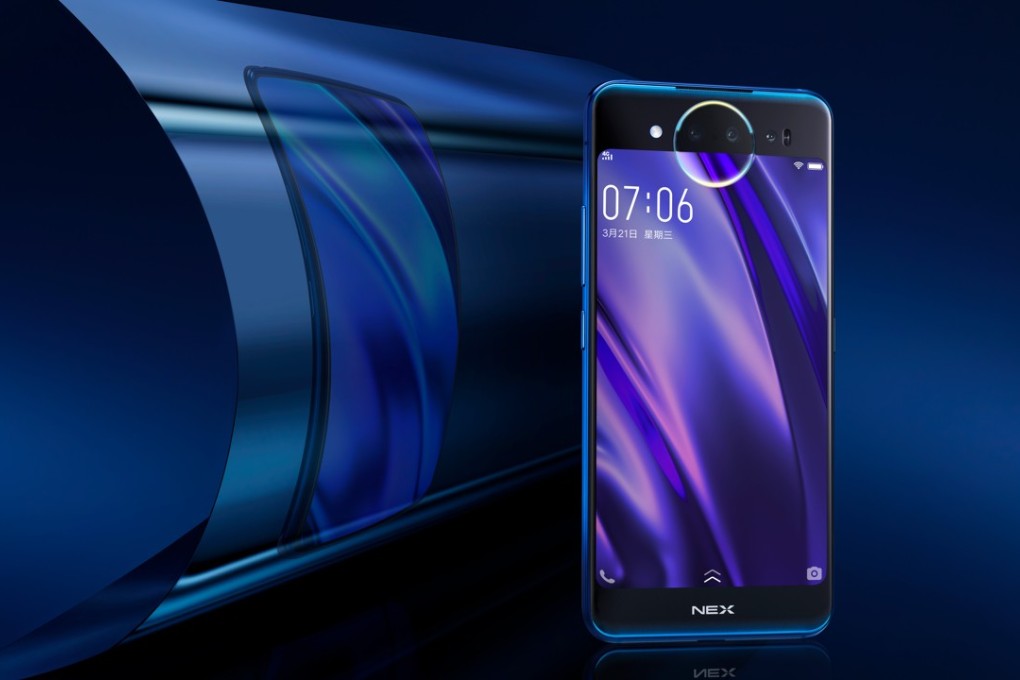Vivo aims for high-end segment with premium, hi-tech handset sporting large dual displays
The new phone’s radical design and technology make it the Chinese smartphone maker’s most expensive offering yet

China’s Vivo launched a new premium handset on Tuesday, equipped with sleek front and back displays as the Dongguan-based company aims high with its most innovative and hi-tech phone yet, carrying a price tag of 4,998 yuan (US$725).
Apart from a 6.39-inch AMOLED display on the front, the Nex Dual Display Edition phone features a 5.49-inch AMOLED rear display with triple cameras. This means users get a bezel-free front and can snap high-quality selfies using the main cameras.
The company has also included some of the best innovations currently available such as 3D sensing technology, facial recognition, in-display finger scanning, as well as 10G RAM and 128GB of storage.
“We do not want to offer a handset that looks like an iPhone. We want to design and provide something completely innovative and different,” Vivo’s design director Kyle Xiao, said during the product launch event in Shanghai on Tuesday night.
Huawei and Vivo, the top two smartphone brands in China, are the only brands that have reported positive growth in shipments in the third quarter this year. The phone manufacturers’ shipments expanded 13 per cent and 4 per cent year-on-year respectively, between July and September, according to research by Counterpoint in November.